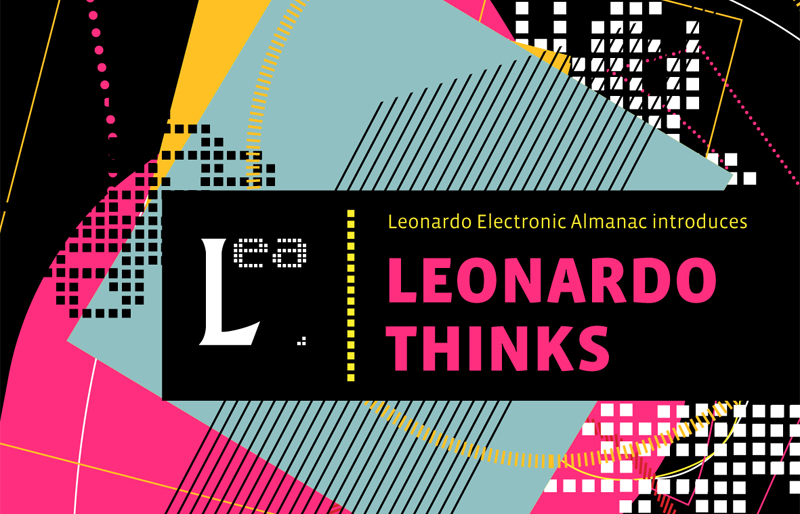
LEONARDO THINKS 1968 – 2012
Contemporary Opinion by Amy Ione
Amy Ione argues that neurological studies are of more value when they do not try to “solve” art but rather are a part of how we enlarge our understanding of the creative process.
Art and the Brain: What Does the Evidence Tell Us?
In the last few years, the term neuroaesthetics has come to denote research that looks at the relationship between art and the brain. The premise within the field is that we can understand art by combining neurological research with aesthetics. Although some of the work associated with this field is compelling, I am among those unconvinced that we can reduce the creation and appreciation of art to a set of physical or neurological laws, or that neuroscience will ever “explain” what art “is” or tell us how the originality that accompanies artistic creation “works.” Still, I often ask myself, Why is it that more connections are not made between art and the brain, given that both domains reach into all aspects of human life?
The tragedy of Gabrielle Giffords offers a good case in point. Giffords, a U.S. Congresswoman from Arizona, was shot in the head at point-blank range in January 2011. The episode left her with a left-brain injury that gave her aphasia, an inability to speak due to damage to the language pathways. During the early stages of her therapy, melody and rhythm were key factors in her recovery. Since language is largely associated with the left side of the brain, while music activates auditory, motor and coordination areas on both sides and is also involved in memory and emotion, she was able to use simple songs and musical patterns to help her regain language and speech. [1]
Brain injuries that intersect with art often provide much food for thought, as Federico Fellini’s case shows. This filmmaker, known for incorporating his own life into his creative projects, suffered a stroke in the territory of the right-middle cerebral artery. Scans from one week after the stroke show a large lesion encroaching upon the temporoparietal regions of the right hemisphere. Many patients who have experienced similar neurological events have poor insight into their conditions. Fellini, however, produced creative drawings that show he retained an uncanny awareness of the motor difficulties related to his stroke. To oversimplify, his drawings showed the expected loss in ability to interpret sensations (anosognosia) and yet he retained the capacity to mock his diminished condition [2], as could be seen often in his films.
Oliver Sacks’s work on art and the brain is frequently described as a nice middle ground of sophistication for the non-specialist, although, admittedly, several neurologists and medical practitioners have told me they dislike the way he simplifies the information he presents. Sacks has also participated in experiments that offer a look at brain operations of a “normal” subject. In one, at Columbia University, brain scans were used to see if Sacks’s brain would register his passion for Bach relative to his distaste for Beethoven. As it turned out, this was the case. Bach activated large areas of the right amygdala, which is vital to processing emotions, even during a sequence when he was unable to distinguish Bach from Beethoven. Does this mean that Sacks has – indeed, that we all have – an unconscious and that his unconscious discriminates even when it does not inform his conscious mind?
Each time I encounter a coupling of art and the brain I ask myself why neuroaesthetic theories often strike me as lacking. I would prefer that studies of how our brains work did not try to “solve” art but rather were a part of how we enlarge our understanding of the creative process. Artistic projects span the spectrum of human life, offering contextual commentary on every subject that intersects with cultural experience and formal statements as well. Our functioning brains are clearly also a part of all aspects of human life. Given how much there is much to learn about brain plasticity and brain functions, what projects can we advance that will further the study of creativity and how it links with human consciousness?
Endnotes
[1] Diane Sawyer, “Gabby Giffords & Mark Kelly: Courage and Hope,” 20/20, ABC network, 14 November 2011. Video available at http://abcnews.go.com/2020/video/gabrielle-giffords-10-months-14953004.
[2] Sebastian Diegueza, Gil Assalb and Julien Bogousslavsky, “Visconti and Fellini: From Left Social Neorealism to Right-Hemisphere Stroke,” in J. Bogousslavsky and M.G. Hennerici, eds., Neurological Disorders in Famous Artists – Part 2 (Basel, Switzerland: Karger, 2007) pp. 44 – 74.
Editors’ Note: We encourage scientists and artists to submit articles on this subject for publication consideration. To submit, please contact Leonardo Executive Editor at rmalina@alum.mit.edu.
ISSN No: 1071-4391
Author: Amy Ione, Leonardo Editorial Advisor, Email: ione@diatrope.com
Director, The Diatrope Institute
Originally published in: Leonardo October 2012, Vol. 45, No. 3
Print: ISSN 0024-094X, Online : ISSN 1530-9282.
Leonardo is a registered trademark of the ISAST.
Files:
